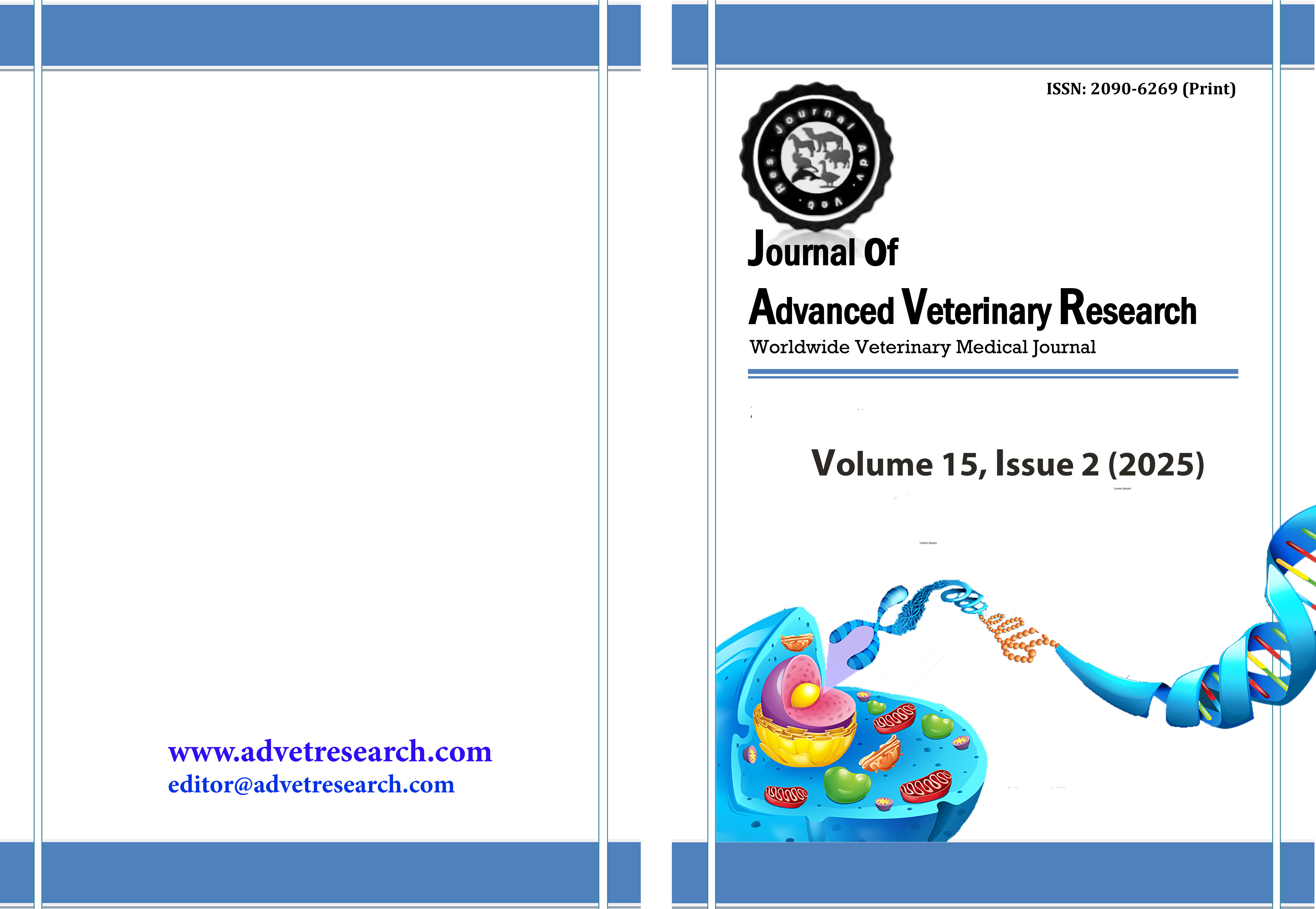Prevalence of aflatoxins in dairy products and the biocontrol potential of lactobacillus acidophilus for detoxification and fungal inhibition
Keywords:
Aflatoxin M1, M2 (AFM1, AFM2), Dairy Products Contamination, Lactobacillus acidophilus Biocontrol , Food Safety Regulations, DetoxificationAbstract
This study aimed to evaluate the preponderance of aflatoxin M1 (AFM1) and aflatoxin M2 (AFM2) in different cheese varieties (Ras, processed, and soft cheese) and raw milk and assess their compliance with Egyptian safety standards. This study investigated the potential detoxification effect of Lactobacillus acidophilus against AFM1 and its inhibitory activity on Aspergillus flavus. One hundred dairy samples were collected from various Menoufia Governorate, Egypt markets. AFM1 and AFM2 levels were confined using high-performance liquid chromatography (HPLC). The probiotic detoxification study was conducted by inoculating milk samples with Aspergillus flavus spores and treating them with L. acidophilus at 1%, 2%, and 3%, monitoring fungal growth and toxin levels over 15 days. The results showed that AFM1 exceeded the permissible limit of 0.05 ppb in 28% of Ras cheese, 16% of processed cheese, 20% of soft cheese, and 8% of raw milk samples, while AFM2 contamination was lower across all categories. Lactobacillus acidophilus exhibited a dose-dependent inhibitory effect on Aspergillus flavus, achieving complete fungal inhibition at 3% concentration by day 6. Moreover, AFM1 levels were significantly reduced, with complete detoxification observed at 2% and 3% L. acidophilus concentrations. These findings highlight the widespread occurrence of AFM1 in the dairy products sector and underscore the potential of probiotic interventions as a natural mitigation strategy for aflatoxin contamination.
Downloads
Published
How to Cite
Issue
Section
License
Copyright (c) 2025 Journal of Advanced Veterinary Research

This work is licensed under a Creative Commons Attribution-NonCommercial-NoDerivatives 4.0 International License.
Users have the right to read, download, copy, distribute, print, search, or link to the full texts of articles under the following conditions: Creative Commons Attribution-NonCommercial-NoDerivatives 4.0 International (CC BY-NC-ND 4.0).
Attribution-NonCommercial-NoDerivs
CC BY-NC-ND
This work is licensed under a Creative Commons Attribution-NonCommercial-NoDerivatives 4.0 International (CC BY-NC-ND 4.0) license




